TL;DR
Bottom Line: When your pages compete against each other for the same keywords, you lose traffic and revenue—keyword mapping stops this by assigning specific terms to individual pages so each one ranks for what it should.
The strategy works by matching primary keywords to category pages, long-tail terms to products, and intent-specific keywords to blog content, giving Google clear signals about your site structure.
Best ROI comes when traffic has dropped, you’re launching new product lines, or your ecommerce site has overlapping category and product pages fighting for the same terms.
Look for proven execution that combines pillar-cluster architecture with strategic internal linking and performance tracking tied to revenue, not just traffic.
Keyword mapping is the SEO process of associating specific keywords and topics with individual pages on your website, ensuring each page targets a unique set of search terms. This strategic framework prevents content overlap, identifies content gaps, improves internal linking through optimized anchor text, and aligns content with user intent to improve organic rankings and user experience.
Imagine spending hours creating content, only to see your pages buried in search results or worse, attracting traffic that never converts.
That’s exactly what happens when you don’t have a clear keyword mapping strategy.
Without one, your site can end up with dozens of competing pages targeting the same keyword and none of them ranking well. It’s a common trap that wastes content resources and confuses both Google and your readers.
Keyword mapping solves this critical issue. It’s not just about selecting keywords, it’s about aligning each one with the right page so both Google and your audience clearly understand your site’s value.
Without a plan, you risk competing with yourself, sending mixed signals to search engines, and leaving valuable traffic untapped.
This is where keyword mapping comes into play. It provides a clear, structured approach to SEO that helps you:
- Recover and protect valuable traffic by eliminating keyword cannibalization and clearly defining intent across your pages.
- Scale content strategically with every page aligned to a specific business goal, not just a keyword.
- Drive more conversions by boosting the visibility and performance of your most important pages through intentional structure and internal linking.
In this guide, we’ll show you exactly how to map keywords, from uncovering valuable terms to assigning them strategically to your pages.
Trying to get more traffic to your product pages? Want better leads from your blog? This guide will show you how to turn scattered keyword research into a clear, ROI-driven plan.
In this article:
Our SEO Services May Be Perfect for You
We’ve been turning keywords into ROI since 2006. Take the next step and learn how our approach to keyword research will transform your business.
What Is Keyword Mapping?
Keyword mapping is a strategic process where specific keywords are carefully assigned to individual pages on your website, ensuring each page contributes to stronger SEO performance and better search rankings.
Instead of randomly placing keywords throughout your site, keyword mapping creates a clear structure, so every page focuses on the right search terms.
At its core, keyword mapping connects search intent with content. When done correctly, it:
- Organizes website structure: Provides a strategic framework for naming and organizing pages, creating logical site architecture that supports your overall SEO goals and makes navigation intuitive for users.
- Prevents content overlap: Helps identify and avoid creating similar or duplicate content that can dilute rankings and confuse search engines about which page should rank for specific queries.
- Identifies content gaps: Reveals opportunities for new content by highlighting valuable keywords and topics your site isn’t yet targeting, uncovering untapped traffic potential.
- Improves internal linking: Enables strategic anchor text optimization for internal links, making it easier for search engines to crawl and understand content relationships while distributing ranking power across your site.
- Aligns with user intent: Ensures content directly addresses what users are searching for at each stage of their journey, enhancing relevance, engagement, and satisfaction.
- Helps search engines understand what each page is about: Clear keyword focus signals topical relevance and purpose to search algorithms.
- Prevents multiple pages from competing for the same keyword: Eliminates keyword cannibalization that splits authority and weakens rankings.
Think of keyword mapping as the blueprint for your content strategy.
With every page serving a clear purpose, optimizing critical SEO elements like title tags, meta descriptions, headers, and internal links is easier.
Here’s a quick example of how keyword mapping might look for a D2C ecommerce store selling running shoes:
| Type of page | Target keyword |
|---|---|
| Homepage | running shoes for men and women |
| Category Page | trail running shoes |
| Product Page | Nike Air Zoom running shoes |
| Blog Post | How to choose the right running shoes for long-distance running |
With this structured approach, every page targets a unique keyword, reinforcing the site’s overall authority in the niche.
Why Keyword Mapping Is Essential for SEO Success
Keyword mapping is more than just organizing your content, it’s the foundation of a results-driven SEO strategy. Without it, your site might struggle with overlapping content, underperform in search rankings, and miss out on valuable traffic opportunities.
It’s also one of the most effective ways to uncover untapped keyword opportunities, especially for product collections or content hubs that can drive high-converting traffic.
Here’s how keyword mapping helps turn your SEO strategy into a revenue-driving machine:
- Eliminates Keyword Cannibalization – Prevent multiple pages from competing for the same search term. A keyword map ensures every page has a clear purpose and performs at its best.
- Uncovers New Keyword Opportunities – Identify valuable terms your site isn’t currently targeting, especially for product collections and long-tail variations that align with buyer intent.
- Improves User Experience – Align your content with what users are actually searching for, making your site easier to navigate and more engaging to explore.
- Boosts Search Engine Clarity – Help Google better understand which pages should rank for specific queries, improving visibility and indexing.
- Simplifies Content Planning – Use your keyword map as a blueprint for content creation. Each new piece serves a defined role in your SEO framework, not just a spot in your blog calendar.
Benefits of Keyword Mapping
Keyword mapping isn’t just an SEO best practice, it’s a strategic investment in your site’s performance and profitability. Here’s how it directly impacts your bottom line and your users:
Stop Revenue Loss from Keyword Cannibalization
When multiple pages target the same term, they compete against each other and you lose traffic. One D2C brand uncovered this issue across numerous product pages.
Maximize Product Category Performance
Without keyword mapping, category, subcategory, and product pages often overlap and underperform. Mapping clarifies the purpose of each page, leading to stronger rankings, more traffic to commercial pages, and higher revenue per session.
Create a Frictionless User Experience
Users land where they expect. When every page targets a specific search intent, site navigation feels intuitive, search journeys are shorter, and bounce rates drop, all of which support more conversions.
Increase Page Authority with Smart Internal Linking
Mapping helps you connect related content through purposeful internal links.
This boosts SEO value and keeps users engaged longer, moving from informational to commercial content with less friction.
Simplify Content Optimization
Clear keyword assignments make writing effective title tags, meta descriptions, and on-page content easier for your team. That leads to faster execution, better ranking performance, and a higher return on your content investment.
Drive More Qualified Traffic
Search engines reward clarity. When each page has a distinct keyword focus, they can confidently rank your site for high-value, high-intent searches, driving better traffic and more conversions over time.
Our Step-by-Step Keyword Mapping Process
So, how do you put keyword mapping into action? Here’s a step-by-step process to get it right:
- Conduct Keyword Research: Find primary, secondary, and long-tail keywords that align with your audience’s needs and goals.
- Group Keywords into Clusters: Categorize related terms together based on user search intent to create focused content themes.
- Assign Keywords to the Right Pages: Map each keyword to the page it best supports, avoiding competition between similar pages.
- Optimize Content Using Your Keyword Map: Use your keyword map to strategically incorporate terms into titles, headers, body content, and meta descriptions.
- Track and Update Your Keyword Map: Continuously adapt your keyword map to reflect search trends and the evolving performance of your content.
In the following sections, we’ll walk through each step in detail.
Step 1: Conduct Keyword Research
Effective keyword mapping begins with robust keyword research. Selecting the right terms ensures your content connects with the right audience, aligns perfectly with search intent, and maximizes your chances of securing high rankings.
Identify Primary, Secondary, and Long-Tail Keywords
A successful keyword strategy uses a mix of keyword types to capture a broad audience while zeroing in on specific user needs and buying intent:
- Primary Keywords – High-volume, core terms that define the page’s main focus.
Example: “running shoes” - Secondary Keywords – Supporting phrases that provide context and answer related questions.
Example: “best running shoes for beginners” - Long-Tail Keywords – Low-competition, highly specific terms that often convert better due to their intent.
Example: “best cushioned running shoes for marathon training”
Example store: Consider an ecommerce store sells running shoes. But, they’re only targeting broad keywords like “running shoes” and not seeing results.
After proper mapping, they add long-tail and secondary terms like “best running shoes for beginners.” These updates help them rank for more specific searches and bring in higher-intent traffic.
By targeting a combination of these keyword types, you increase your chances of ranking for competitive terms and niche, high-intent searches that drive conversions.
Analyze Search Intent
Every keyword represents a distinct intent. By understanding search intent, you can tailor your content to deliver exactly what users are looking for, improving both engagement and results.
Informational intent refers to users primarily seeking answers or knowledge about a topic. They aren’t necessarily looking to make a purchase, but want to understand something better. For example, a user searching for “how to choose running shoes” is likely trying to gather information to make an informed decision.
Commercial intent indicates that users are in the consideration phase. They’re exploring different options and comparing products or services before making a purchase.
Think of someone searching for “Nike vs. Adidas running shoes,” where the user is evaluating brands.
Transactional intent shows that users are ready to take action, usually to make a purchase. They have done their research and are now looking to complete a transaction.
An example of this is “buy waterproof running shoes online.”
Example Store: A fitness brand gets strong blog traffic but few conversions. The issue? Their content doesn’t match user intent.
They revise posts to target informational and commercial queries. Then they add links to product pages with transactional keywords. Conversions go up, and blog traffic starts driving real revenue.
Mapping content to intent helps you meet users where they are in their journey and guide them toward action.
Assess Keyword Difficulty and Search Volume
Not all high-volume keywords are worth targeting. When researching, consider factors like:
- Keyword Difficulty: Measures how hard it is to rank for a keyword. Higher difficulty means more competition.
- Search Volume: Indicates how many people search for a keyword each month. Higher volume can mean more traffic potential.
- Relevance: Even if a keyword has high volume, it must align with your content and business goals.
Example Store: A fashion brand targets “summer dresses” but can’t compete with bigger sites. They shift to “cotton summer dresses with sleeves”, a lower-difficulty, more relevant keyword.
The page starts ranking faster, drives more traffic, and cuts ad costs.
Step 2: Group Keywords into Clusters
After gathering a list of keywords, the next step is organizing them into clusters.
Keyword clustering is the grouping of related terms under broader topics. Cluster related keywords together based on search intent and topic similarity to determine which broad themes and specific subtopics your content will cover.
This grouping process reveals natural content relationships and helps you identify which keywords should appear on the same page versus separate pages.
How Pillar and Cluster Pages Work Together
Pillar content serves as the broad, main page that covers a topic generally, targeting high-volume primary keywords. These pages provide comprehensive overviews and link out to more specific subtopics.
Cluster content consists of detailed subpages that cover specific subtopics in depth, often targeting long-tail keywords with clearer user intent. These pages link back to the pillar page and to related cluster pages, creating a strong topical network.
For example, a pillar page might target “running shoes” while cluster pages target “trail running shoes,” “marathon running shoes,” or “cushioned running shoes for beginners.”
A pillar page serves as your main category hub, targeting broad keywords like “Men’s Shoes.”
Cluster pages then branch off to target more specific searches like “Men’s Running Shoes” or “Men’s Dress Shoes.”

“best men’s shoes” or “men’s sneakers.”
It serves as a central hub, giving users a general overview of all the men’s footwear available on the site. From this page, visitors can explore different styles, including running shoes, basketball sneakers, slides, and lifestyle options.
Each of these categories is linked as a sub-collection, making it easy for users to narrow down their search based on their specific needs while helping search engines understand the site’s structure.
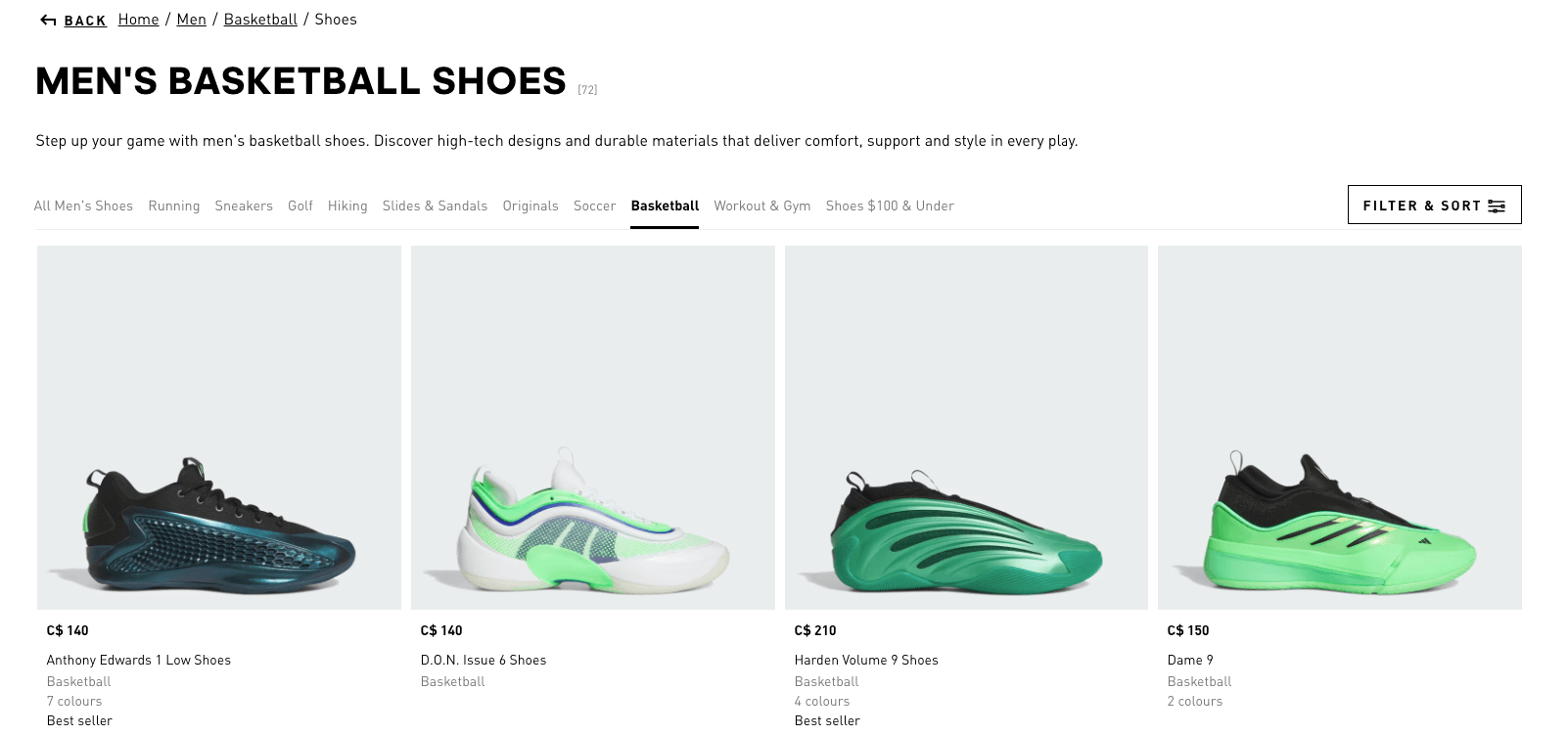
It targets a more specific keyword, “men’s basketball shoes”. The page builds on the broader pillar page for men’s shoes.
This page focuses entirely on basketball footwear, offering detailed filters, product listings, and brand-specific options like the Harden Volume 9 or Dame 9 shoes.
At the same time, it links back to the main men’s shoes page and sits alongside other related collections like running or gym shoes, helping search engines understand how all these pages are connected under the same overall topic.

These pages further target long-tail keywords, including specific model names, athletes, and detailed attributes such as color and fit.
These pages are optimized for bottom-of-funnel users who are further in the buyer journey and ready to make a purchase decision. These product pages still link to related products and back to the basketball collection via breadcrumbs.
Step 3: Assign Keywords to the Right Pages
Once you’ve grouped keywords into clusters, the next step is assigning them to the most relevant pages. This ensures that each page has a distinct focus, preventing overlap and helping search engines understand your site’s structure.
How to Assign Keywords Effectively
1. Map Primary Keywords to High-Level Pages
- Assign broad, high-volume keywords to categories and subcategories
- Example: A page for “Men’s Running Shoes” should target terms like “best running shoes for men” or “men’s marathon shoes.”
2. Use Secondary Keywords for Supporting Pages
- More detailed sub-collections and product pages should target related long-tail keywords with specific intent.
- Example: A Nike running shoe product page might focus on “Nike Air Zoom Pegasus 40 for long-distance running.”
3. Align Keywords with Search Intent
- Informational keywords (e.g., “how to choose running shoes”) should be used for blog posts or buying guides.
- Transactional keywords (e.g., “buy men’s trail running shoes online”) should be assigned to product pages.
Example: Assigning Keywords in an Ecommerce Store
For a store selling outdoor gear, keyword assignment might look like this:
Category Page (Broad Collection Page / Pillar Page)
- Page: “Men’s Hiking Boots”
- Primary Keyword: “best hiking boots for men”
- Secondary Keywords: “men’s waterproof hiking boots,” “durable hiking boots for rough terrain”
Sub-Collection Page (Cluster Page)
- Page: “Waterproof Hiking Boots”
- Primary Keyword: “best waterproof hiking boots”
- Secondary Keywords: “men’s Gore-Tex hiking boots,” “lightweight waterproof hiking shoes”
Product Page
- Page: “Salomon X Ultra 4 GTX Hiking Boots”
- Primary Keyword: “Salomon X Ultra 4 GTX review”
- Secondary Keywords: “best Gore-Tex hiking boots for men,” “Salomon waterproof hiking boots”
By structuring keyword assignments this way, each page serves a clear SEO purpose without competing against other pages on the site.
Step 4: Optimize Content Using Your Keyword Map
Keyword mapping isn’t just about assigning terms to pages, it’s about using them effectively within the content.
Proper on-page SEO ensures that search engines understand your page’s relevance while also improving user experience.
Use your keyword map to guide on-page SEO and create stronger, more impactful content with these steps:
1. Use Keywords Naturally in Key Elements
- Place primary keywords in the title tag, H1, meta description, and URL.
- Use secondary keywords throughout the body text and subheadings (H2s, H3s).
- Avoid keyword stuffing—content should feel natural and user-friendly.
Your title tags and meta descriptions deserve special attention. These elements directly impact click-through rates from search results. Craft compelling titles under 60 characters and meta descriptions under 160 characters that include your primary keyword naturally while enticing users to click.
2. Enhance Readability and Engagement
- Break up text with bullet points, short paragraphs, and relevant subheadings.
- Incorporate images, videos, and infographics to improve engagement.
- Use bold and italics to emphasize key terms and ideas.
3. Optimize for Featured Snippets
- Answer common user questions in concise, direct sentences (ideal for Google snippets).
- Use tables, lists, and step-by-step instructions to improve chances of ranking in position zero.
4. Update and Refresh Content Regularly
- SEO isn’t static. Review top-performing pages and update content periodically.
- Add new keywords, internal links, and updated stats to keep content fresh.
Create Your Keyword Mapping Spreadsheet
A well-organized keyword mapping spreadsheet is your central organizational tool for managing your entire strategy and keeping your team aligned.
This spreadsheet becomes your single source of truth for content planning, optimization work, and preventing keyword cannibalization.
Essential Columns for Your Keyword Map:
- Topic Cluster: The broad pillar theme this keyword belongs to (e.g., “Men’s Hiking Boots”)
- Page Topic/Title: The working title or H1 for the page
- URL: The target URL (existing or planned)
- Primary Keyword: The main search term this page should rank for
- Secondary Keywords: 2-5 supporting terms to include naturally in the content
- Search Volume: Monthly searches for the primary keyword
- Keyword Difficulty: Competition level to help prioritize efforts
- Content Angle/Intent: The unique approach or whether it’s informational, commercial, or transactional
- Current Status: Existing page, needs optimization, or needs to be created
- Priority Level: High, medium, or low based on business impact
Update this spreadsheet regularly as you create new content, track ranking improvements, and identify new keyword opportunities. It ensures you never duplicate efforts or create competing pages by accident.
Internal Linking & Anchor Text Strategy
A strong internal linking strategy supports keyword mapping by guiding users and search engines through related content.
When done correctly, it distributes ranking power across your site and strengthens your overall SEO.
How to Use Internal Links Effectively
- Link to Related Pages Within the Same Keyword Cluster
- Example: A category page for “Hiking Boots” should internally link to:
- “Best Waterproof Hiking Boots” (sub-collection)
- “Salomon X Ultra 4 GTX Hiking Boots” (product page)
- Example: A category page for “Hiking Boots” should internally link to:
- Use Descriptive, Keyword-Rich Anchor Text
- Instead of “Click here”, use descriptive text:
- Check out our guide to the best trail running shoes.
- Click here to read more.
- Instead of “Click here”, use descriptive text:
- Maintain a Clear and Logical Linking Structure
- Pillar pages should link to cluster pages, and vice versa.
- Product pages should link back to relevant category pages to reinforce authority.
- Avoid Excessive Internal Links on a Single Page
- Stick to 3-5 internal links per 1,000 words, depending on context.
Proper internal linking ensures search engines can crawl and index your pages efficiently while improving user navigation and engagement.
Example Store: On Shopify, internal links are often limited to breadcrumbs or menus. This is a missed opportunity.
Instead, add contextual links within product descriptions to guide users to: related categories, blog guides, style or fit recommendations.
This approach boosts discoverability and conversions, without depending on navigation menus or filters.
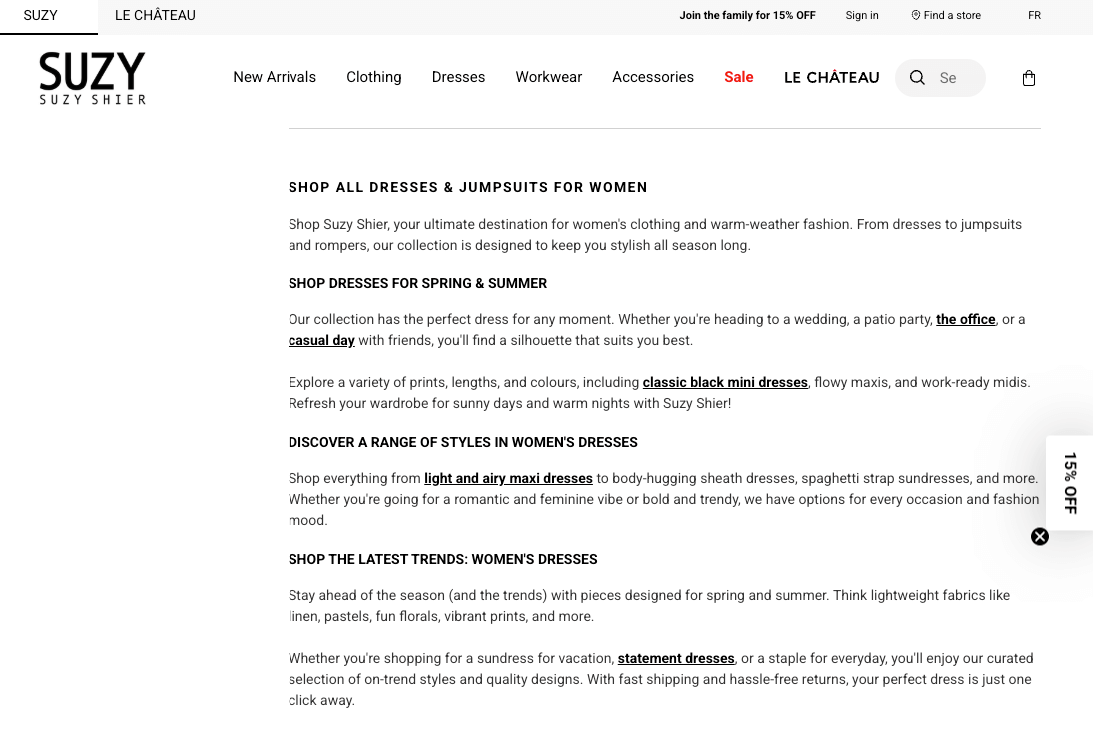
Step 5: Track and Update Your Keyword Map
Keyword mapping isn’t a one-and-done task.
If you’re investing in SEO but not seeing ROI, stale strategies could be to blame. As search algorithms evolve and user behavior shifts, your keyword map needs to adapt too.
To drive meaningful results, monitor performance regularly, tracking which keywords are generating traffic and contributing to conversions. This allows you to double down on what’s working and adjust areas that aren’t delivering ROI.
How to Monitor Keyword Performance
Tracking keyword performance reveals high-impact opportunities and shows which efforts are driving actual results.
It helps ensure your SEO strategy supports core business goals, like revenue growth, lead generation, and customer acquisition. Here’s what to measure:
Conversion Rates and Revenue Impact
Go beyond traffic.
Measure how well each keyword or page contributes to sales, lead submissions, or other key conversions. If a page ranks well but doesn’t convert, revisit the content, calls-to-action, or alignment between keyword and user intent.
Track performance against revenue where possible, so you’re investing effort where it matters most.
Keyword Rankings
Use Google Search Console, Semrush, or Ahrefs to see how well your pages rank for priority keywords. Identify keywords that are slipping in rankings and update on-page optimization accordingly.
Organic Traffic Trends
Use GA4 to monitor traffic growth and identify which pages draw the most visitors. Pay close attention to high-traffic pages with low conversions, this often signals a mismatch between keyword intent and page content.
Click-Through Rate (CTR)
In Google Search Console, review pages with high impressions but low clicks. Optimize titles and meta descriptions to improve CTR and capture more potential revenue-driving traffic.
Use Your Keyword Map to Guide New Content Creation
Your keyword map isn’t just for optimizing existing pages, it’s a living document that guides strategic content creation.
When you identify content gaps or discover new keyword opportunities through research or performance tracking, add them to your map. Prioritize new content creation based on:
- Business value and conversion potential
- Keyword difficulty and competition level
- Alignment with user intent and customer journey stage
- Resource availability and content team capacity
This ensures new content fits strategically into your existing structure rather than being created in isolation, preventing keyword cannibalization and maintaining a cohesive site architecture.
When to Update Your Keyword Map
To stay competitive and adaptive, regularly update your keyword map. Here’s when you should revisit and refine your strategy:
- When Google updates its algorithm, it affects your search rankings.
- When new keyword trends arise, offering fresh opportunities.
- When competitors outrank you, indicating changes in search behavior.
- When introducing new products, services, or content requiring optimized targeting.
- When current pages underperform and need new keyword focus or optimization.
A quarterly keyword map review ensures your site stays optimized for current search trends and business goals.
Common Keyword Mapping Mistakes to Avoid
Even with a structured keyword mapping strategy, mistakes can undermine SEO performance. Avoiding these pitfalls will help ensure your site ranks effectively and delivers the right content to the right audience.
1. Ignoring Lower-Volume Opportunities
Many businesses focus only on high-volume, high-competition keywords.
That strategy often leads to wasted effort, especially if you’re competing with major brands. Instead, balance these with lower-volume, long-tail keywords that are easier to rank for and better aligned with user intent.
For example: One of our clients in the technology space had several products lined up with several collections.
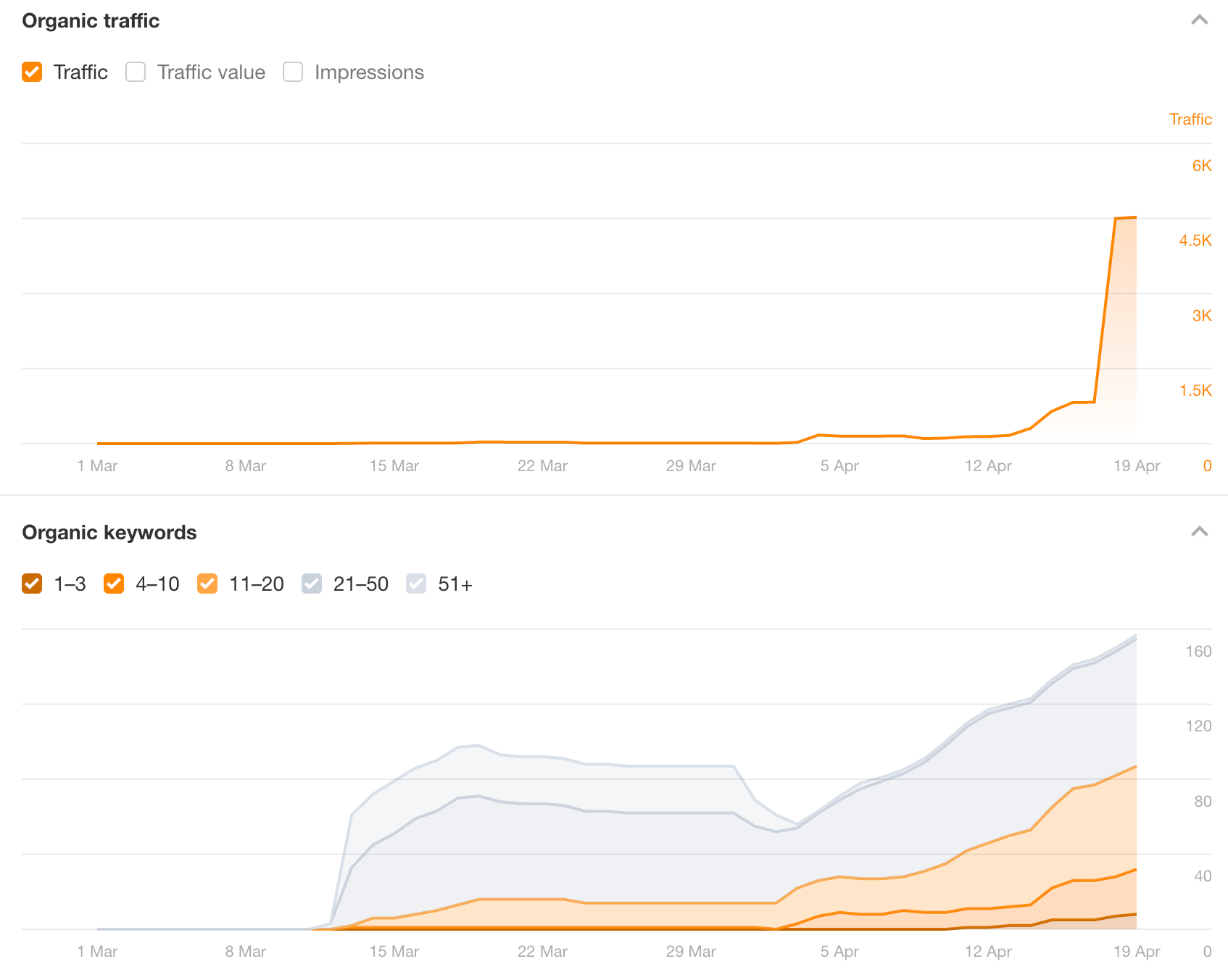
2. Cannibalizing Keywords Across Multiple Pages
Keyword cannibalization happens when multiple pages target the same or similar keywords, causing them to compete in search results.
Instead of supporting one another, they dilute your site’s authority on the topic, hurting both rankings and clicks.
Example: One of our clients had two separate pages—one for “smart doorbells” and another for “video doorbells,” but both were optimized for the keyword “best video doorbell.”
As a result, Google couldn’t determine which page to prioritize, and both struggled to rank.

3. Missing Internal Linking Opportunities
Internal links are vital for SEO and UX. They help search engines crawl your site and guide users to explore related content. But too often, e-commerce sites underuse them, especially on collection and product pages.
Missed Opportunity: Solo Stove
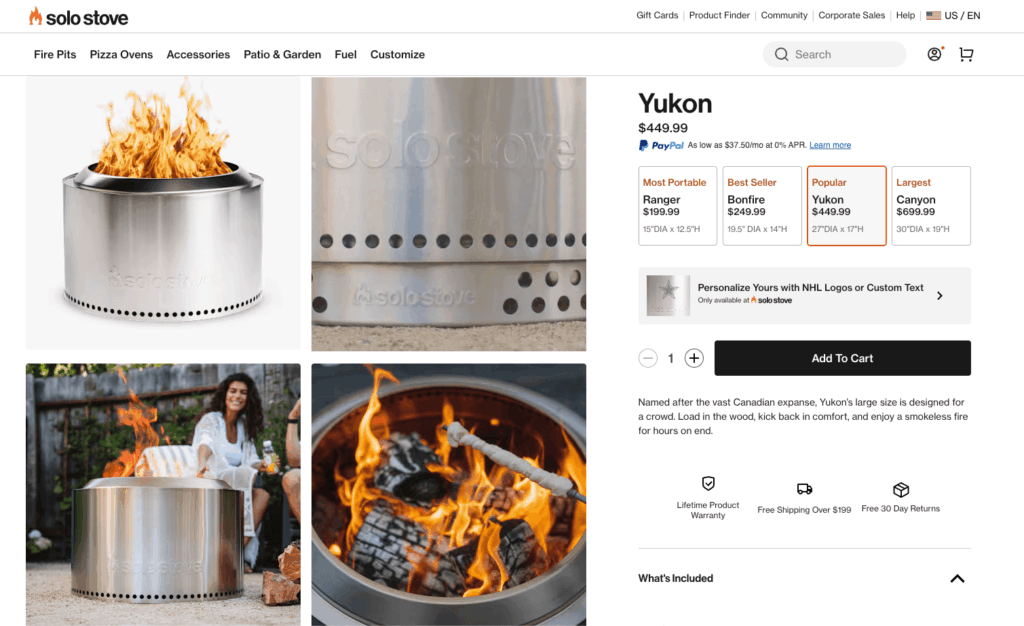
There are no links to related guides, accessories, or blog content, just product tiles and menu nav.
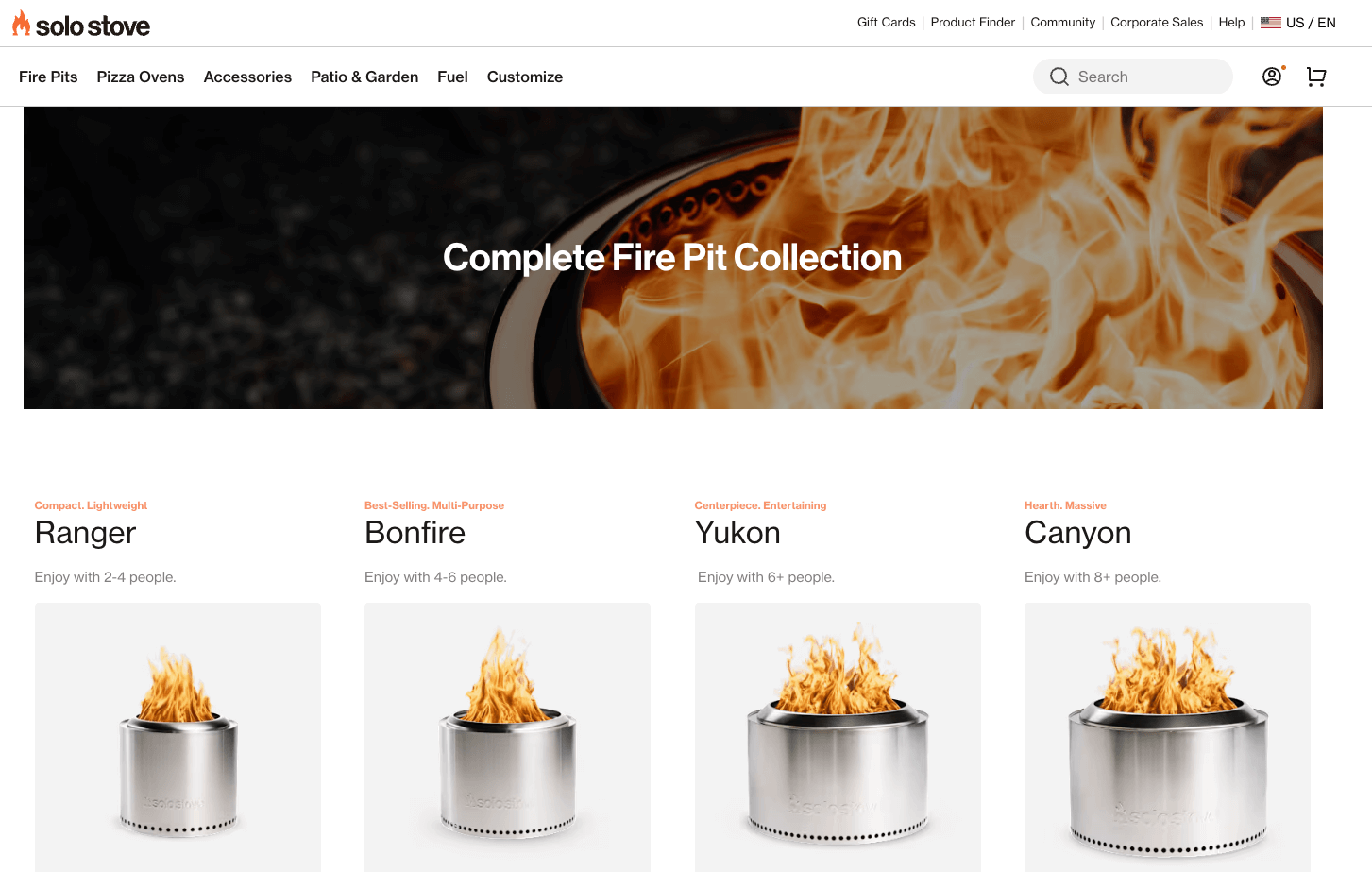
The description offers no internal links to compatible items (like fire pit tools or stands), setup guides, or content that answers buyer questions.
This creates a dead-end for users and search engines, limiting discoverability and SEO value.
Turn Keyword Mapping into Growth
Keyword mapping isn’t just a part of the broader SEO strategy—it’s the foundation that holds everything together.
If you want to rank consistently higher and attract the right traffic, you’ll need more than a list of keywords. A comprehensive, well-executed SEO strategy is essential.
At Digital Commerce Partners, we create tailored SEO strategies that align perfectly with your goals and audience’s needs. From keyword mapping to SEO audits, we’re here to help you succeed.
Ready to stop guessing and start growing? Contact us today to see how our keyword research and mapping services can help you achieve lasting growth!

